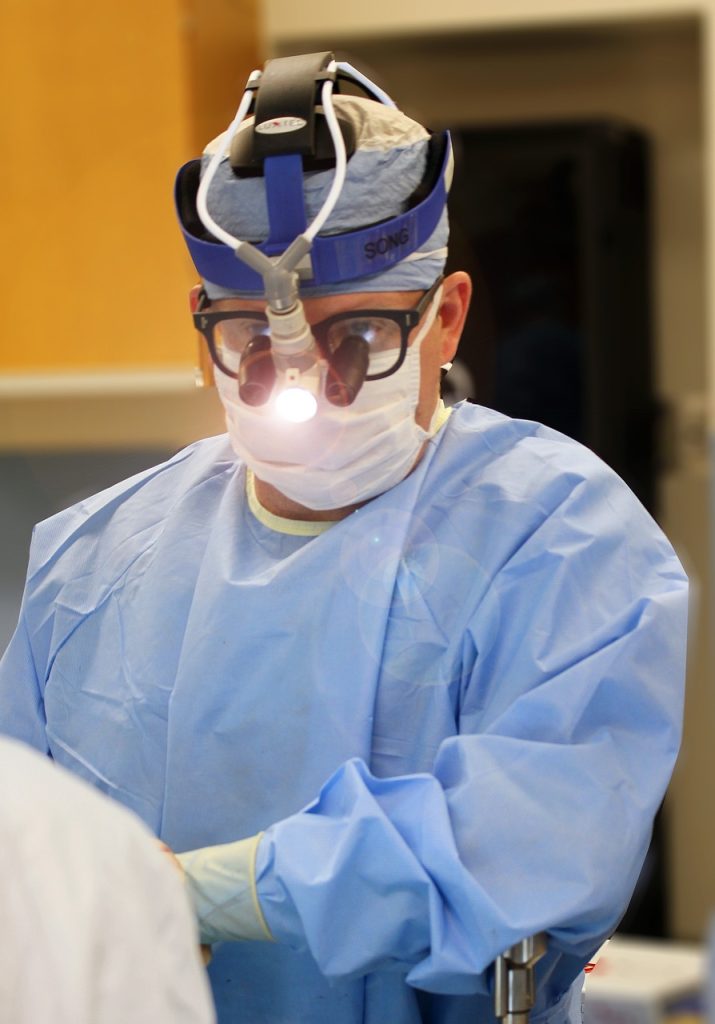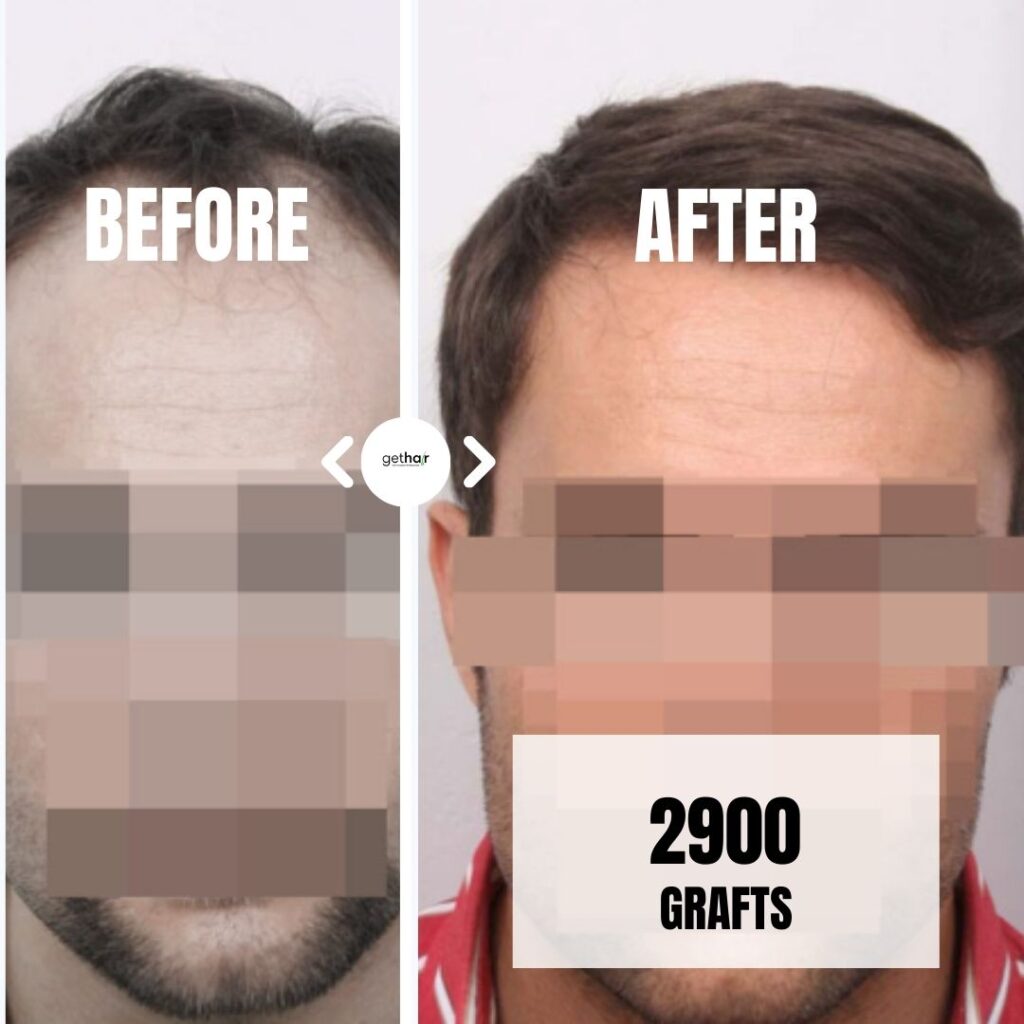Hair transplants, while a blessing for many, are shrouded in misconceptions. Despite the advancements and successful outcomes, many myths continue to circulate, creating doubt and uncertainty. It’s crucial to sift through these myths to uncover the truth about this life-changing procedure.

Are Hair Grafts a Painful Procedure?
The thought of a hair transplant procedure being painful is one of the most widespread myths, but don’t let this misconception deter you. With modern surgical methods and the option of soothing local anesthesia, hair transplants are typically performed without causing pain during the surgery. Although some slight discomfort or a sense of soreness might be felt once the anesthesia subsides, this can be efficiently managed with the appropriate pain medication. Moreover, other therapies, such as PRP and nanofat injections, are available which can complement the hair transplant procedure and aid in preventing further hair loss.
Benefits of Local Anesthesia in Hair Transplant:
- No pain during the procedure
- Reduced anxiety for the patient
- Ability to perform the procedure on an outpatient basis
- Quicker recovery time post-surgery
After the surgery, patients may experience a bit of swelling, which is a normal part of the healing process. This swelling typically diminishes within a few days and can be easily managed alongside any minor discomfort.
Cons:
- Minor discomfort and swelling after the procedure
- Necessity for pain management in the immediate recovery period
Best For: Individuals concerned about pain but eager for hair restoration should find comfort in knowing advanced technology has made the experience virtually painless.
Busting the Myths: Are Hair Transplants Just for Men?
Absolutely not! This common misconception couldn’t be further from the truth. Hair transplants, which have soared in popularity as advanced hair restoration techniques, do not discriminate based on gender. Facilities like GetHair emphasize that both men and women can benefit from hair transplant solutions.
While men might have been the more visible beneficiaries in the past due to the pattern baldness look, women also suffer from hair loss issues such as alopecia, and consult a hair restoration surgeon for treatments tailored to their unique patterns. The pattern of hair loss in women typically manifests as a widening part on their scalp.

Top 5 Features of Gender-Inclusive Hair Transplants:
- Tailored techniques for male and female hair loss patterns
- Customized hairline design to fit facial features
- Consideration of hair texture and density
- Flexible graft placement for natural-looking density
- Sensitive approach to the emotional aspects of hair loss for both genders
Benefits:
- Available to both men and women experiencing alopecia or other forms of hair loss
- Emotionally empowering, providing renewed confidence
- Enhanced natural-looking results through specialized hair transplantation procedures
- Specialized treatment plans for all hair types
- Access to consistent follow-up and personalized care
Cons:
- Potential lack of awareness that the procedure is also suitable for women
- Misconceptions may prevent some women from seeking treatment
Best For: Individuals—regardless of gender—looking to combat hair loss and restore their hair’s natural appearance should explore hair transplant options. Engaging with a hair restoration surgeon can demystify the process and provide a plan specifically for androgenetic alopecia, which gives both men and women the chance to regain confidence in their appearance.
The Temporary Results Misconception
This myth of hair transplant results being temporary stems from a misunderstanding. Despite the myths, hair transplant procedures are designed to offer permanent solutions to hair loss. The truth is, the effects of a hair transplant are long-lasting, utilizing your own donor follicles for a robust solution. Transplanted hair follicles, which resist shedding and hair loss, are meticulously taken from areas that are genetically resistant to balding, typically the back of the head. This ensures they will continue to grow for a lifetime in their new location.
It’s important to note that some of your hair may fall out during the first few weeks post-transplant — a process known as ‘shock loss,’ but this is normal and temporary, much like the natural shedding process. In due time, the transplanted hair follicles settle in and start producing hair that will grow naturally. Additionally, to support hair growth and further prevent hair loss, topical applications like minoxidil or oral medications such as finasteride are often recommended as part of a comprehensive treatment plan.

Top 5 Features of Hair Transplant Longevity:
- Use of permanent hair follicles resistant to hair loss
- Graft survival rate is high with proper care
- Continued hair growth throughout life
- Natural-looking results that improve over time
- Integration with existing hair for a seamless appearance
Benefits:
- Permanent solution to hair loss
- One-time procedure with long-term results
- No need for repetitive treatments or ongoing expenses
- Maintenance of hair density and youthfulness
- Improvement or stabilization of one’s hairline for years, incorporating treatments like finasteride, which is often used to complement the effects of the transplant by preventing further hair loss.
Cons:
- Misconceptions about its permanence can lead to hesitation
- Requires patience for final results to be visible
Best For: Someone looking for a durable remedy to hair loss, supporting the transplant with medications like minoxidil for optimal scalp health and hair growth maintenance.
Do Transplants Have an Unnatural Appearance?
Hair transplants have been dogged by myths and misconceptions, perhaps the most persistent being the idea that they create a noticeably fake appearance. Let’s cut straight to the chase and dispel this fiction: modern hair transplant techniques, powered by significant technological advancements, are designed to produce results that are virtually indistinguishable from natural hair growth.
Highly skilled surgeons employ methods such as Follicular Unit Extraction (FUE) and Follicular Unit Transplantation (FUT) to make strategic decisions about the placement, angle, and density of transplanted hair. These meticulously performed procedures ensure that newly transplanted hairs blend seamlessly with the surrounding follicles, promoting a convincingly natural look. In fact, the attention to detail provided in these procedures means that, once healed, even up-close scrutiny won’t betray the fact that a hair transplant has been performed.
Hair Transplants Are Only for the Wealthy?
Here lies one of the most stubborn myths: hair transplants are a luxury reserved for the upper echelons of society. However, as more individuals share their hair restoration journey online, it becomes evident that this procedure is more accessible and affordable than ever. Hair transplant treatments, including cost-effective options, provided by GetHair, prove to be financially practical in the long-term. With such options as the FUE Beard Transplant and Hair Transplant For Women, the one-time cost is often more economical compared to the ongoing expenses of short-term treatments. Moreover, the results are nearly permanent, offering value that extends far beyond the initial investment.
Top 5 Features of Hair Transplant Accessibility:
- A range of options
- One-time investment in appearance
- Competitive and flexible pricing models
- Near-permanent results reducing future costs
- Availability of different techniques to suit budgetary constraints
Benefits:
- Democratizes the opportunity for hair restoration
- Near-permanent solution offering value for money
- Eliminates ongoing expenses on temporary hair loss treatments
- Offers a sense of investment in oneself, bolstering self-esteem
- Financial planning aided by clear, upfront costs
Cons:
- Initial cost may still seem daunting without considering the long-term savings
- Perception of exclusivity persists, deterring some potential clients
5 Accurate Facts About Hair Transplants
When considering a hair transplant, it’s essential to arm yourself with accurate information. The procedure has evolved significantly with advancements in scar minimizing techniques such as FUE hair transplant procedures, including follicular unit extraction, ensuring the latest in unobtrusive healing methodologies. It’s important to understand the details: from the latest fue hair transplant techniques to expected outcomes, and most importantly, the qualification of the surgeon.
Transplants work by moving hair from a donor area to the thinning or balding area and over time, as your hair grows, which can include a healing phase to minimise scarring, it looks as natural as the rest of your hair. Quality surgeons will ensure your hair’s natural growth direction and your age-appropriate hairline are considered, all while using cutting-edge technology to enhance success rates, which includes the possibility of incorporating various transplant procedures.
Clarifications on Hair Transplant Procedures:
- Extensively trained professionals perform the procedure, using methods like FUE that are designed to limit scarring and promote efficient healing.
- A consultation will provide personalized information, where factors like scarring propensity and the best practices for healing post hair transplants can be discussed.
- It’s safe with a high success rate when done correctly; hair transplants, especially FUE, have become standard procedures with documented successful outcomes.
- Recovery periods are clearly defined, and aftercare is provided, which is critical for ensuring healing without significant scarring.
- Visible improvement is gradual, reflecting the natural hair growth cycle, and proper healing can facilitate a more successful overall appearance.
Ensuring accurate, updated, and honest information helps you set realistic expectations and make a well-informed decision on whether a hair transplant is the right step for you. With thorough research and professional guidance, including an understanding of the scarring and healing processes associated with hair transplants, your path to restoring your hair can be clear and secure.
Conclusion
As you weigh the decision for a hair transplant, understanding the reality behind the myths is indispensable. Hair transplants can be a virtually painless, gender-inclusive, enduring, and natural-looking solution – not confined to the wealthy. There are many affordable options that offer a permanent remedy to hair loss.
While misconceptions may persist, armed with factual, up-to-date information, and the guidance of a skilled surgeon, you can make a decision that significantly improves your quality of life and self-confidence. Always consult with trusted professionals and do not let myths stand in the way of achieving the full mane you desire and deserve.
Simply schedule a free consultation with GetHair to learn more about our hair transplant services and to begin the process. Don’t forget to follow us on Instagram and like, share, and comment.
Remember, a hair transplant isn’t just about restoring hair; it’s about reclaiming the confidence and self-perception that comes with it.ly for the best possible results.
